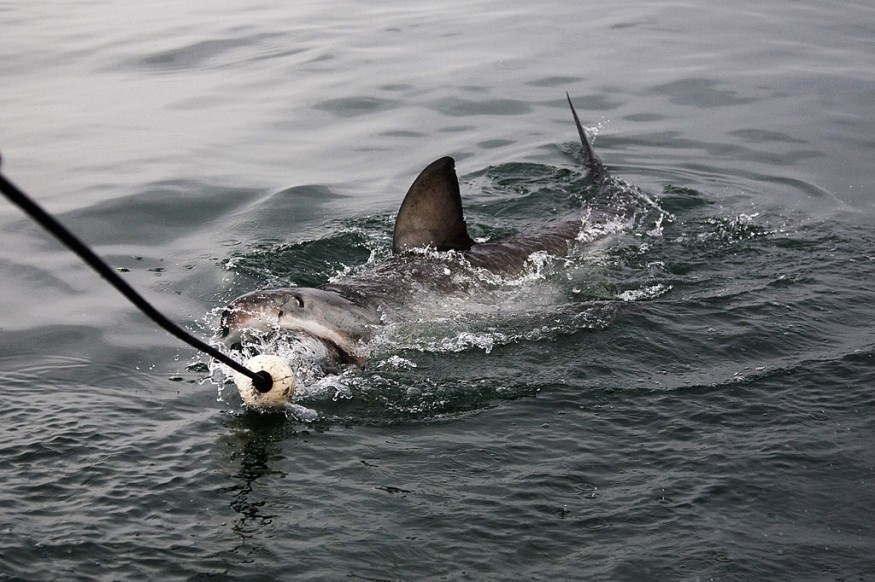A dead great white shark washed ashore in a California beach and was killed during a fishing activity, according to local authorities. The great white carcass measure 8 feet long was classified by the authorities as a juvenile shark. Although having a track record of predation, great whites are still protected under US waters and are still suffering from historic population decline around the world.
Authorities suggest the manner which killed the 8-feet-long juvenile female great white shark was accidental when it got caught by a fishing gear. It is still unclear who was responsible and when the great white shark exactly died. However, the incident sheds light on the importance of protecting the great white shark species (Carcharodon carcharias), especially when accidentally caught in open waters.
Dead Great White Shark

The Torrey Pines State Natural Reserve & State Beach through a Facebook post on Tuesday, November 1, revealed details of the washed up dead great white shark near tower 2, at a beach in Torrey Pines, California, where the ocean predator succumbed to her injuries. The site is situated in the reserve's state beach, located just north of San Diego city.
In the Facebook post, it can be seen that a park ranger is beside the dead juvenile female great white shark. The reserve said in the post that Great Whites should be protected and must be safely released when accidentally caught. The post also said it turned the unfortunate incident into an educational opportunity to enlighten visitors.
The authorities add juvenile Great Whites have become a frequent visitor to the Torrey Pines coastal area.
Great White Shark Population
Great white sharks can be found all over the world, and these marine predators can grow to lengths of up to 20 feet and weigh 5,000 pounds. The marine predators have significantly declined in numbers, particularly in the Northwest Atlantic Ocean and South Pacific Ocean, according to Jane Williamson, a marine ecologist and fisheries biologist at the Macquarie University in Australia, told Newsweek.
According to the World Wildlife Fund (WWF), the said great white shark population is decreasing and have become rare due to years of being hunted by humans for their fins and teeth, most often used as a trophy for sport fishing. The white shark is often caught as a "bycatch" by commercial fisheries and can also become accidentally entangled in meshes that protect beaches, the WWF adds.
Fishing Activity Threat
In addition to natural predators of the great white sharks such as orcas or killer whales, marine plastic pollution and human activities like overfishing or excessive fishing have contributed to the population's decline.
Other natural contributors of a declining great white shark population are ocean warming triggered by climate change and global warming.
In the US, certain cumulative impacts of various stressors, including contamination, coastal development, ocean acidification, bycatch, climate change, place West Coast great white sharks at heightened risk of extinction, according to the non-profit ocean conservation organization Oceana.
© 2025 NatureWorldNews.com All rights reserved. Do not reproduce without permission.





